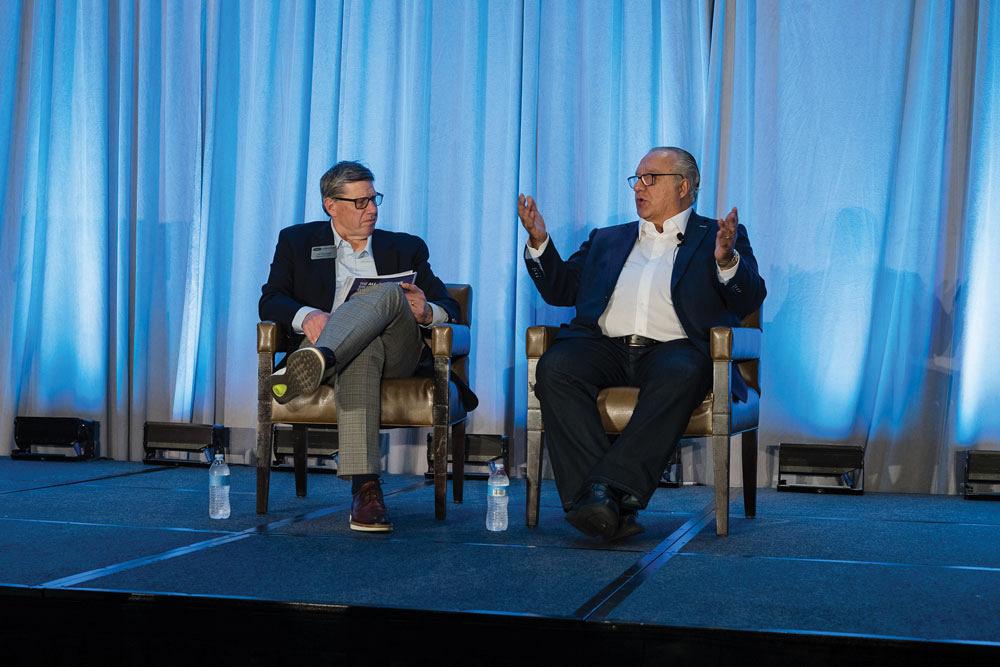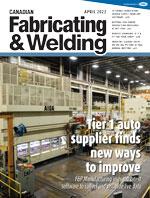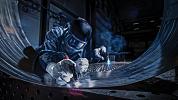- FMA
- The Fabricator
- FABTECH
- Canadian Metalworking
North American fabricators navigate unprecedented times
Industry leaders focus on the big picture at FMA Annual Meeting
- By Tim Heston
- May 19, 2022
- Article
- Management
Sheryl Connelly thinks the conventional SWOT analysis—which delves into a company’s strengths, weaknesses, opportunities, and threats—has some serious flaws, mainly because it tends to focus the analysis inward: our strengths, our weaknesses. Managers who rely on SWOT analyses heavily could develop blind spots.
Connelly has an unusual job. She’s manager of global consumer trends and chief futurist at Ford Motor Co., and as such she’s paid to think broadly and connect the dots to see how seemingly unrelated data points could profoundly affect a business, sheet metal fabrication included.
Connelly presented these insights at the Fabricators & Manufacturers Association (FMA) Annual Meeting. From March 1 to 3, more than 300 people from around the industry met in Miami—in person, at long last—to discuss metal fabrication’s perennial issues, from rapid technological change to finding good people who can make the most of that technology. Her presentation summed up a theme at the conference: Think about the big picture first, then carry those gained insights inward to make strategic decisions and adapt to shifting market realities. After all, a fabricator doesn’t determine its strengths and weaknesses; its customers do. And those customers are navigating unprecedented times amid pandemic, skyrocketing commodity prices, social tensions, even war.
Put the Big Picture First
“Within organizations, people tend to think that what made them successful before will make them successful in the future,” Connelly said. “Sometimes, when things are going perfectly, you need to totally blow up your business model.
“Your plan has to be global,” Connelly continued. “We live in unprecedented times, and we need to think big picture. If something catches your eye and it appears off, pay attention.”
Instead of the traditional SWOT analysis, Connelly suggested fabricators plan using a bullseye, with the “world” on the outer ring, “region” on the intermediate ring,” and “you” in the middle.
“Unlike the SWOT analysis, which starts inside and goes outward [from the bullseye toward the outer ring], this method starts outside and moves inward,” she said. “Doing this, we also see how different changes interact with each other. Change is not linear; it’s a ripple effect.”
The Quest for Talent
The ripple with the farthest reach is, of course, the industry’s never-ending labor shortage. As in previous years, the 2022 conference covered hiring, training, and casting a broader net for talent—including what’s by far the largest underrepresented group in metal fabrication: women.
“I have never been to a manufacturing conference that didn’t talk about the labor shortage,” said Lisa Wertzbaugher, co-founder of Wertzbaugher Services, a tube fabrication shop based in Iowa, and founder of Wertzbaugher Consulting, a small-business consulting firm. While leading a panel on women in fabrication, Wertzbaugher described ways to bring more women into the fabrication workforce.
A lot of those strategies resemble those discussed at a separate panel on Gen Z in metal fabrication. For many people, be they men or women, flexibility is more important than ever. “Flexibility in the job is critical for me,” Wertzbaugher said, adding that her shop has found a way, using alternating shifts and other strategies, to accommodate flexible work schedules. “It can be hard to do [in a manufacturing environment], but not having employees is hard too.”
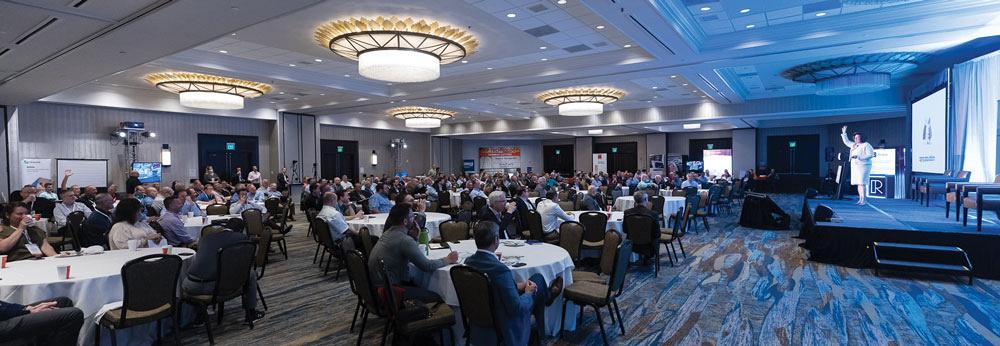
Sheryl Connelly, global consumer trends and chief futurist at Ford Motor Co., presented big-picture thinking during her keynote.
Tomorrow's Opportunities
The pandemic’s ripple effects have changed work schedules, even work culture and, not least, the reliability of supply chains—a reality felt especially in automotive. “Last year the [North American] automotive industry missed the opportunity of a lifetime. They would have been able to produce 18 million cars. It would have been a phenomenal year. But they produced only 13 million, just because they weren’t able to receive parts. And microchips were just the tip of the iceberg … These supply chain issues are a consequence of choices about globalization made to reduce cost and boost Wall Street.”
So said Lourenco Goncalves, chairman/president/CEO of Cleveland-Cliffs, during a Q&A session with Ed Youdell, president of FMA. Cleveland-Cliffs had a busy 2020, acquiring both AK Steel and the U.S. operations of ArcelorMittal. That made the company the largest flat-rolled steel producer in North America and the largest supplier of automotive-grade steel in the U.S. Since the ArcelorMittal acquisition, Cleveland-Cliffs has hired more than 3,000 people.
Goncalves’ job is to think broadly, and during the session he revealed several global trends to watch. He started with climate change. “CO2 is a problem,” he said. “We can’t deny global warming is a problem. We need to reduce CO2 emissions, and there’s only one way to do it. We need to reduce carbon.”
Goncalves said that the company will be investing heavily in new equipment in the coming years. “The decarbonization effort will not be a free ride. We’ll be modernizing our technology and implementing new [systems] that don’t exist today, like carbon-capture storage.”
He added that although steel producers are carbon emitters, they do not represent the largest segment. The two largest emitters of CO2, he said, are tailpipe emissions and the energy sector. This fact is driving change in automotive and energy production.
Automotive’s shift to electric vehicles (EVs) will continue unabated, which is good news for the metals manufacturing sector. Not only does each vehicle use more metal than their internal combustion counterparts, but their popularity (combined with government incentives) will drive the building of an expansive EV infrastructure. When someone plugs their car into a charging station, there’s a good chance that station has some sheet metal in it.
When it comes to energy, Goncalves is looking ahead for more investment in alternative sources. He mentioned the usual suspects, including wind and solar, but he also said that to truly reduce emissions significantly, the U.S. may well be turning to a less talked about source of clean energy.
“Nuclear,” he said. “This won’t happen tomorrow, of course. This will happen over the long term,” adding that as of now, nuclear energy has the best shot of replacing fossil fuels on the scale the U.S. needs. Goncalves paused, then chuckled briefly. “You heard it here first!”
Undergirding all this, he said, will be price stability. “I believe [steel pricing] indexes are good only for those negotiating the steels if they are not the owners. I’ve been in this business for 41 years in three countries, in the United States since 1998. I don’t recall negotiating a deal in which we [factor in] the CRU or another index. We negotiate everything. That’s how the business should be taken care of, in my opinion. We should try not to sell based on the index and try to create stability for everyone on the supply chain.”
A Time of Rapid Change
With stability comes opportunity, exemplified by two South Florida fabricators who hosted tours during the event. One was USAnchor, a Davie, Fla.-based company launched by Kenny Attai, an entrepreneur from Trinidad who aimed to futureproof his business not only with a fibre laser, but also with a robotic laser welding cell—not your everyday sight in a small job shop.
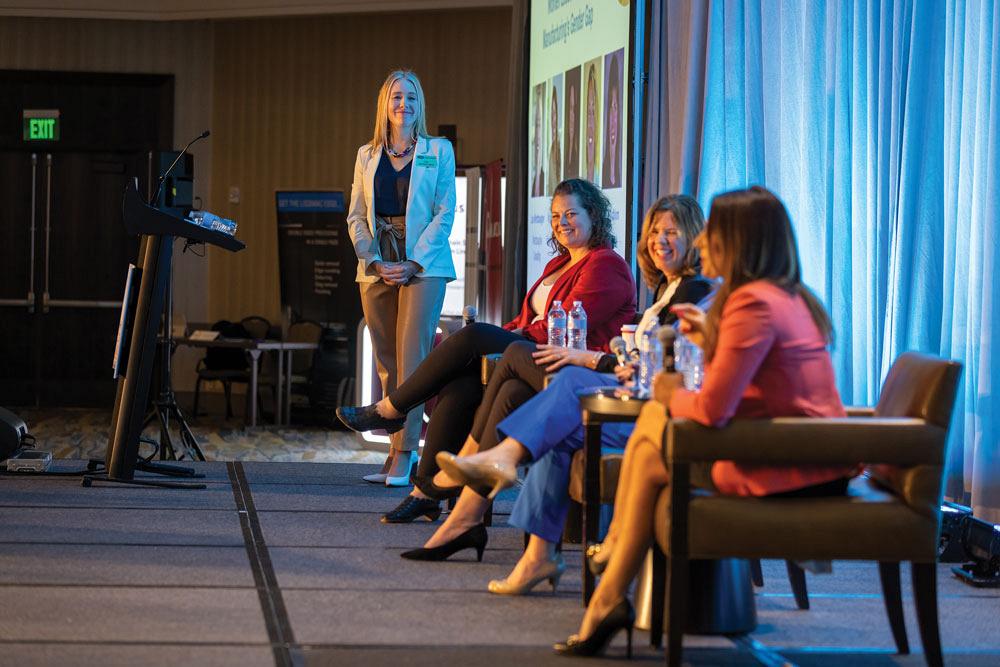
A panel moderated by Iowa-based Lisa Wertzbaugher (standing) of Wertzbaugher Services/Wertzbaugher Consulting, discusses strategies for bringing more women into the metal fabrication workforce. Pictured from left is Vanessa Heim, CEO of Brenco Industries Ltd., Delta, B.C.; Valerie Bentdahl, director of people and operations, and Lisa Lindblom, director of sales and marketing, Jones Metal Inc., Mankato, Minn.; and Lauren Sulla, GM at Detroit-based Venture Steel.
Another stop on the tour was Industrial Sheet Metal (ISM) in Hialeah, Fla. Five years ago the 20-employee operation was immersed in old-school sheet metal fab, with most employees wielding metal snips and performing layout by hand.
Today ISM has transformed. It has a modern fibre laser, a punch/laser combo, and modern press brakes, along with a team of engineers versed in SolidWorks. And not all of them work locally—a feat that rose many eyebrows during the tour. The group witnessed, among other things, one remote engineer working in offline bending software to adjust a backgauge position for forming a complex part, complete with contoured edges and multiple bends at unusual angles—no simple 90-degree bend to be found. Those screens helped remote employees collaborate with on-site personnel.
ISM’s Russell Murton told the group that the fact that so many at the company have roots in old-school layout and other shop practices, and that the shop’s most experienced people know the intricacies of sheet metal design and fabrication, made the transition to modern machines and software all the more powerful. “We wouldn’t have it any other way,” he said.
Like many family fab shops, ISM is undergoing a generational transition, and that new generation is making its mark in a big way. Considering the changes the shop made just in the past five years, as well as the manufacturing has evolved during that time, just imagine what the next five years will hold not just for ISM, but for the industry as a whole.
The next FMA Annual Meeting will occur Feb. 28-March 2 in Las Vegas. For updates, visit fmamfg.org/annualmeeting.com.
About the Author

Tim Heston
2135 Point Blvd
Elgin, IL 60123
815-381-1314
subscribe now


Keep up to date with the latest news, events, and technology for all things metal from our pair of monthly magazines written specifically for Canadian manufacturers!
Start Your Free Subscription- Industry Events
Automate 2024
- May 6 - 9, 2024
- Chicago, IL
ANCA Open House
- May 7 - 8, 2024
- Wixom, MI
17th annual Joint Open House
- May 8 - 9, 2024
- Oakville and Mississauga, ON Canada
MME Saskatoon
- May 28, 2024
- Saskatoon, SK Canada
CME's Health & Safety Symposium for Manufacturers
- May 29, 2024
- Mississauga, ON Canada














